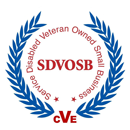A decade in the making: VetAdvisor’s advanced technology successfully changes veteran realities with virtual ones.
Think back to the late ‘90s, when “The Matrix” wowed moviegoers with a story of a world in a computer. In the years that followed, online virtual worlds became more interactive with games like Second Life and The Sims.
Fast-forward to today. Digital realms and how we interact online are more fact than fiction, with real-world uses that are changing lives.
We see this in the growth of telehealth. Though it is common today, the concept of offering health care through online communications tools began to increase in use in 2015, and has steadily increased since then. At Three Wire Systems, LLC, a technology company based outside of Washington, D.C., we were ahead of the trend.
In 2009, we developed a revolutionary program by combining virtual worlds, a subset of virtual reality (similar to The Sims), and what we know today as telehealth services to help our nation’s military veterans overcome trauma and thrive as they reintegrate into the workforce.
FLASHBACK TO 2009
Before virtual reality and telehealth rose to prominence on the tech scene, Three Wire was already sharing advanced technology solutions to help solve a problem: connecting veterans to local Veterans Affairs (VA) hospitals. At the time, while the VA was already working to reach those who served in World War II, Korea and Vietnam, a new era of service members were entering the scene — post-9/11 veterans, specifically those who served in Operation Enduring Freedom (OEF) in Afghanistan and Operation Iraqi Freedom (OIF) in Iraq. Up to 20 percent of OEF/OIF veterans experience post-traumatic stress disorder (PTSD) and 25 percent struggle with depression.
Many of these cases go undetected, leading to increased rates of substance abuse, homelessness and suicide. What’s stopping these men and women from getting help? Despite their heroic actions, many say they are embarrassed to ask for help, creating a stigma among the veteran community.
VIRTUAL REALITY ELIMINATES THE STIGMA
So how do virtual worlds come into the picture? In 2009, Three Wire created its virtual collaboration tool, to provide mental health and other services to veterans. By using virtual worlds, Three Wire ensured that veterans were able to get the help they needed while eliminating the stigma.
 VetAdvisor’s Virtual Collaboration Tool (VCT)
VetAdvisor’s Virtual Collaboration Tool (VCT)
Partnering with 3D Immersive Collaboration Consulting (3DICC) to create a virtual world similar to the one in the game Second Life, Three Wire offers a completely private and discreet virtual space for veterans to get the help they need and deserve.
After completing orientation, veterans create an avatar and are given the option to customize their virtual space with photos, plants, and other decorations they enjoy, creating a safe and comfortable environment.


CEO Dan Frank says, “This technology was an interesting idea that I first heard about at a conference with 3DICC. Virtual worlds connect the fun appeal of gaming with the need for holistic health services. VetAdvisor services started by telephone, moved to virtual worlds, and have expanded even further to customizable case management systems. We began with one program, found success, and are still using avatars today.”
Using avatars, veterans interactively collaborate with a VetAdvisor care coordinator or licensed coach that provides holistic services, including behavioral health, wellness, financial advice, and all aspects of transition and career development. Within VCT, 70 percent of VetAdvisor coaches are veterans, making them uniquely qualified to understand the needs of service members.
3DICC continued to advance the platform, allowing new collaboration features such as the ability to create to-do lists, share resources, and upload documents like resumes and budgets and edit them in real-time. Avatars can log on any time, even in between appointments, to access these documents or venture off to public spaces, such as the Auditorium, to watch group presentations or participate in virtual career fairs. Avatars also have access to classrooms with various learning materials.
Trusted by the U.S. Army, Air Force, Navy, Marines, Veteran Affairs, and other leading agencies, Three Wire works with service members around the globe. This virtual collaboration tool makes it easy to schedule appointments and even connect with military members overseas.
WHY IT WORKS

Overall, our virtual collaboration tool provides a high-quality coaching session engaging military members in a space where they feel comfortable sharing information while building a trusted relationship with a coach. By working together in a virtual room, it helps speed up the process that might otherwise take longer over a phone call or via email. This approach frees up time for VetAdvisor coaches to schedule additional appointments, whether with new clients or existing ones. Appealing to all ages, veterans, ranging from 20-year-olds to seniors, have opted to work with us through our platform. Because VCT offers a preferred way to communicate, veterans are more likely to stay engaged and continue working toward their goals. Looking at these photos now may be like peering into the past, but this is still being used to help veterans. Like an older version IPOD with hundreds of favorite songs, VCT still holds all the important pieces that are no longer fringe technology. It is not new to Three Wire, but it remains effective.


